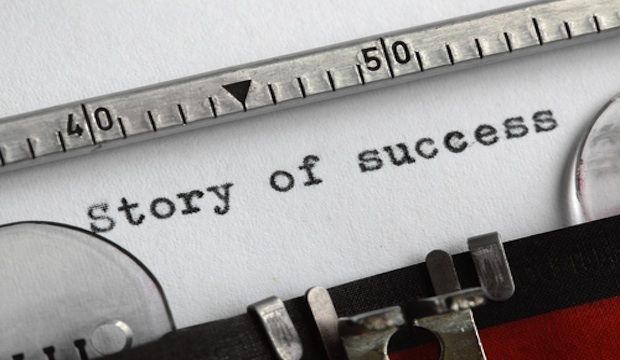
“The purpose of a storyteller is not to tell you how to think, but to give you questions to think upon,” writes Brandon Sanderson, author of “The Way of Kings.”
He’s right. When you have a good story, you think; you get inspired to take action. And today we’re going to give you a look at how to do that – how to tell a story with your data.
If you think back to English class, a story has five key elements – setting, plot, characters, theme, and conflict. We’ll use those to describe how to tell a story with your data.
Setting
The setting provides the situation. Setting the stage gives your decision makers and collaborators the background they need to understand where your story is coming from and where it’s going.
Data visualization, combined with an explanation, is a good way to help set the stage.
Lesson: When you’re introducing data, be sure to offer a visual and a backstory so everyone knows what’s going on.
Plot
The plot is usually the most important element of a story. It is the point of the story. It’s a series of events. It’s a timeline. It’s the business case.
Lesson: Offering up data visualization with easy-to-follow visuals ensures the plot in your story is evident.
For instance, Kaiser Fung talks about this on Junk Charts. He shows how a designer creates a chart to explain how smartphones gained users so quickly. However, the chart muddied the plot with too many points on the graph.
Characters
In some data stories, the characters are the most important part. The intentions and perceptions of your customers can mean everything in sales or competitive advantage. So, it’s important to be sure you focus on the characters in your story. Tell their stories. Give them names. Give them personalities.
Lesson: Tell the stories of your customers by graphing their perceptions of new products. Create a timeline of the sales cycle and highlight the points where they may leave or buy more. Drill down into testimonials and social comments to gain better views of your characters.
Conflict
Often, when we’re using data to tell a story, we’re seeking to solve a mystery, a conflict, a struggle. How many times have you heard yourself say, “I’m struggling to understand . . .?”
Lesson: The questions we ask of our data help us establish where the conflicts are and the steps to resolution. Be sure to guide your audience with questions in the plot and setting. Get them asking, “What if . . .?”
Theme
Often called the main idea, the theme of your story is the takeaway. Is it a lesson? Is it a next step? Is it a new story developing for your data? Your job here is to be sure to set the tone. Give a nugget of information for your decision makers to take with them and to resolve the story with this theme.
Lesson: It’s a good idea to call out your theme (the title of your data presentation) in a meeting invite. Without a main idea, a next step is hard to take. Without a theme, your story may have a beautiful setting or dramatic conflict. But it won’t teach, act, or provoke much thought without a theme.
Today’s Main Idea: Data can give your story a visual, a discussion on the conflict, a new business line. Use it to illustrate and show your stakeholders how to overcome obstacles and conflicts.
Next Steps:
- Try Spotfire: Get started with a free, 30-day trial that allows you to upload a spreadsheet then start creating beautiful visualizations.
- Subscribe to our blog to stay up to date on the latest insights and trends in big data and big data analytics.





